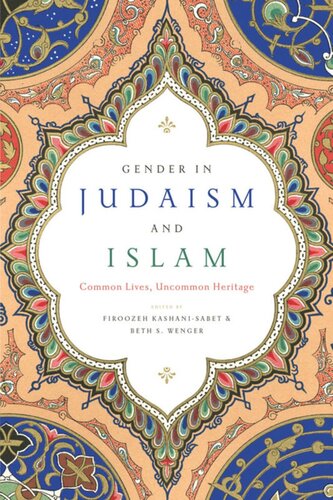

Most ebook files are in PDF format, so you can easily read them using various software such as Foxit Reader or directly on the Google Chrome browser.
Some ebook files are released by publishers in other formats such as .awz, .mobi, .epub, .fb2, etc. You may need to install specific software to read these formats on mobile/PC, such as Calibre.
Please read the tutorial at this link: https://ebookbell.com/faq
We offer FREE conversion to the popular formats you request; however, this may take some time. Therefore, right after payment, please email us, and we will try to provide the service as quickly as possible.
For some exceptional file formats or broken links (if any), please refrain from opening any disputes. Instead, email us first, and we will try to assist within a maximum of 6 hours.
EbookBell Team

4.3
48 reviewsJewish and
Islamic histories have long been interrelated. Both traditions emerged from
ancient cultures born in the Middle East and both are rooted in texts and
traditions that have often excluded women. At the same time, both groups have
recently seen a resurgence in religious orthodoxy among women, as well as
growing feminist movements that challenge traditional religious structures. In the
United States, Jews and Muslims operate as minority cultures, carving out a
place for religious and ethnic distinctiveness. The time is ripe for a volume
that explores the relationship between these two religions through the prism of
gender.
Gender in Judaism and Islam brings together
scholars working in the fields of Judaism and Islam to address a diverse range
of topics, including gendered readings of texts, legal issues in marriage and
divorce, ritual practices, and women's literary expressions
and historical experiences, along with feminist influences within the Muslim
and Jewish communities and issues affecting Jewish and Muslim women in
contemporary society. Carefully crafted, including section introductions by the
editors to highlight big picture insights offered by the contributors, the
volume focuses attention on the theoretical innovations that gender scholarship
has brought to the study of Muslim and Jewish experiences.
At a time
when Judaism and Islam are often discussed as though they were inherently at
odds, this book offers a much-needed reconsideration of the connections and
commonalties between these two traditions. It offers new insights into each of
these cultures and invites comparative perspectives that deepen our
understanding of both Islam and Judaism.